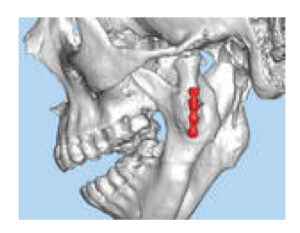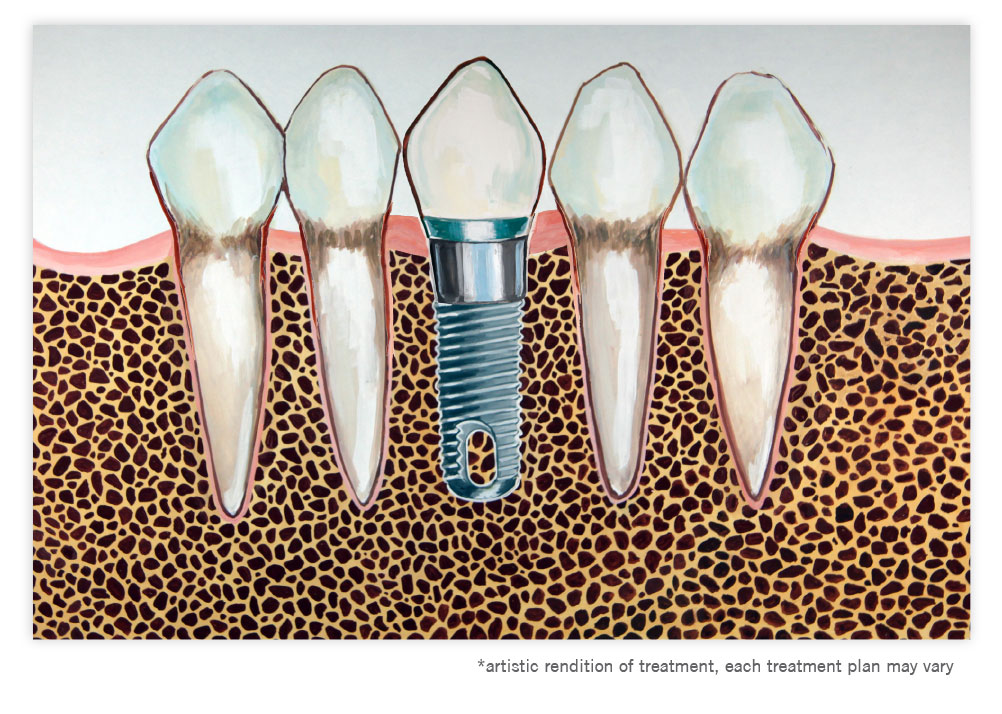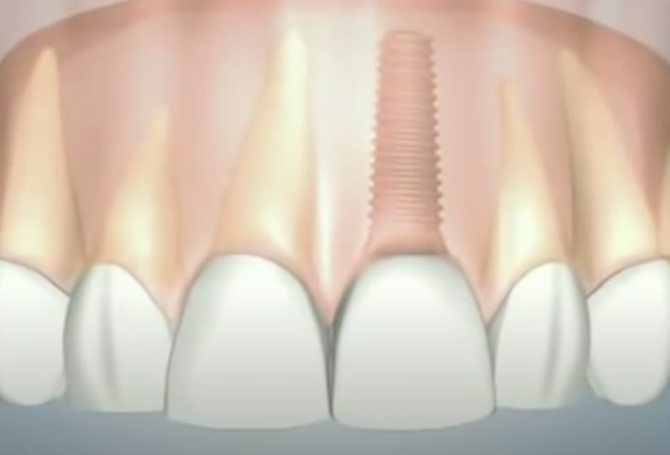High-Quality Dental Implants in Buffalo, NY
Meet Our Implant Specialists
Frequently Asked Questions
Dental implants are a great solution for tooth loss, however, you will need a consultation with one of our oral surgeon’s to see if they are right for you. A consult is the initial meet and greet with the oral surgery team in which patients’ concerns are addressed and medical and dental histories are reviewed.
A clinical exam is performed as well as any additional exams required. Imaging will either be taken, ordered, or requested. At this time, the oral surgery team will develop a treatment plan in line with the patient’s needs and desires. The patient will then be scheduled for treatment based on their needs and desires.
This will depend on who places your implant. The first appointment is a consultation which will determine your treatment plan based on review of your medical and dental history, review of dental imaging and an examination of your mouth.
If an implant cannot be placed right away or if any bone grafting or other procedure need to be done first. If the tooth extraction has not yet bet done, it could potentially be done the same day of your consultation. Even with dental extractions, the implant can sometimes be placed that day. If it is not, It will typically be placed a few months later once the bone has been given time to heal.
Implants most often are allowed time to heal before having restorations made for them. There are situations in which implants can be immediately restored and this will be discussed at the time of the consultation.
The implant and restorative process may be as quick as 6-9 months. Most commonly, the healing time is 3 months. There are situations where certain types of bone grafting or medical conditions that necessitates longer healing times.
If you are interested in having the extraction or immediate implant placement that day, please notify our team at the time of scheduling your appointment.
There are multiple steps as well as different options when it comes to dental implants.
Extraction and Socket Graft:
Your doctor will extract your tooth and will fill the empty socket with bone. Typically, the bone used is from a bone bank. All of the cellular and tissue components are taken out of the bone and only the crystals will remain. In most cases this bone has a granular consistency. This graft is used as scaffolding for your own bone to grow. Your body will replace it with your own bone over 6 – 18 months. You will need to wait 8-10 weeks until your implant(s) can be placed.
Sinus Lift:
A sinus lift is often necessary when teeth in the back of the upper jaw were removed many years ago. Your sinus will start to drop down, because there are no tooth roots to keep it in place and the amount of bone for an implant is limited. In order to place your implant, you will need to have a sinus lift. During this delicate procedure the membrane that lines the sinus will be located and elevated to its original position.
Your doctor will then add bone to the area to ensure there is enough space and bone for the implant to be placed. You will need to wait at least 6 months until your implant(s) can be placed.

Tunnel Bone Graft:
When your tooth or teeth have been missing for an extended period of time, your doctor may need to bulk the width of the jaw with some bone to ensure you have enough bone volume. They will make a tunnel in your gum and place bone in the area. You will need to wait 12-16 weeks before your implant(s) can be placed.
Onlay Graft:
In order to place your implant you may need to have an onlay bone graft. This typically is necessary when teeth in the lower jaw were removed many years ago. When you do not have any teeth in an area for an extended period of time, your jawbone will start to melt away. In order to place implants, you need enough bone to surround the implant on all sides. Your doctor often will harvest a block of bone from the back of your jaw and place it in the area where the implants will be placed and will secure it with a couple of bone screws. This bone will grow back. You will need to wait at least 6 months until your implant(s) can be placed
Platelet Rich in Growth Factors:
This procedure mostly accompanies a sinus lift or bone grafting procedure. Your own blood will be drawn and spun down to separate the proteins from your blood. It will make a membrane that will be placed over bone grafting material. Your own growth factors will be used and will ensure a faster healing
time and a more beneficial result.
3D CT Scan:
 For most cases, usually only a few simple x-rays are necessary to give us the information that we need to formulate an appropriate implant treatment plan. However, there are some instances in which we need more detailed imaging studies to give us the accurate information needed for a successful treatment outcome. We now have the ability to obtain highly accurate CT scans of the face and jaws, without sending you to the hospital for expensive and time-consuming tests. This advanced imaging technology allows the surgeons to view the proposed surgical sites and surrounding anatomy in exquisite, three-dimensional detail. The computer software allows viewing and manipulation of these 3-D images from multiple perspectives, giving us the information we need to make your procedure a long term success.
For most cases, usually only a few simple x-rays are necessary to give us the information that we need to formulate an appropriate implant treatment plan. However, there are some instances in which we need more detailed imaging studies to give us the accurate information needed for a successful treatment outcome. We now have the ability to obtain highly accurate CT scans of the face and jaws, without sending you to the hospital for expensive and time-consuming tests. This advanced imaging technology allows the surgeons to view the proposed surgical sites and surrounding anatomy in exquisite, three-dimensional detail. The computer software allows viewing and manipulation of these 3-D images from multiple perspectives, giving us the information we need to make your procedure a long term success.
Implant with Cover Screw:
When your doctor places your implant, sometimes he will decide to place a cover screw on top of the implant and will close the area with dissolvable sutures. This typically occurs with the front lower or upper teeth. After 12 weeks your doctor will uncover the implant (open up the area) and a healing abutment will be placed on top of the implant. This healing abutment will allow your gum tissue to heal around it and prepare the site for your final crown (your tooth).
Implant with Healing Abutment:
When your doctor places your implant, sometimes they will place a healing abutment on top of the implant. This healing abutment will be prominent and touchable by your tongue. Your gum tissue will heal around it to get prepared for your final crown (your tooth).
Implant with Final Abutment:
Your final abutment is the underlying support for your crown (your tooth). Your crown will be cemented or screwed into this portion of the implant. You will not be ready for this abutment until your implant has healed to the bone typically in a period of 12 weeks. Your doctor or your dentist, based on your dentist’s preference, will place this abutment. Your dentist will be placing your crown (your tooth).
Implant with Final Crown:
Approximately 12 weeks after surgical placement of the implant into the jawbone, it is now ready for the final phase of treatment. At this point, enough bone has grown into the surface of the implant to anchor it and to safely allow normal chewing forces. The restorative dentist will then take impressions of the upper and lower jaws and send these to the dental lab technician who will fabricate the final crown. The crown or “cap”, as it is often called, is the part that is seen in the mouth and looks and functions like a tooth. Your doctor will either cement or screw the final crown into place to complete your treatment.

Your options may include any of the following depending upon which tooth is to be replaced and some other factors. Not doing anything certainly is an option, but a very poor one. Shifting of teeth, premature wear of adjacent teeth, bite instability and TMJ problems may ensue.
A removable partial denture is a relatively inexpensive option which involves replacement of missing teeth with a prosthesis that must be removed from the mouth by the patient at night and after eating to clean it, and utilizes metal or plastic clasps or hooks around adjacent teeth to anchor the prosthesis in place. These can prematurely wear the teeth.
A complete denture is a dental prosthesis that provides a complete set of upper or lower teeth that are attached to a pink acrylic base that looks like gum tissue. The denture can be removed by the patient to allow cleaning. This denture is totally supported by soft tissue and bone. The stability is dependent on the intimate relationship between the denture and supporting tissue.
A fixed bridge prosthesis is a more permanent option meaning that it is cemented in place by the restorative dentist and cannot be removed by the patient. A fixed bridge requires that several of the adjacent teeth be ground down to a peg shape so the prosthesis may be cemented on top of them. This has high potential to cause problems with these teeth and makes it somewhat difficult to clean under the bridge. The complication and failure rate of a fixed bridge approaches 50% at 10 years after bridge placement.
- A dental implant is the most elegant solution for replacing your lost or missing teeth.
- Dental implants never decay.
- Dental implant treatment is one of the most successful procedures in the medical/dental field with documented success rates of 92%-98% of up to 30+ years.
- Dental implants are often the solution for patients with minimal to significant dental challenges.
- Dental implants look and function like natural teeth.
- Dental implants allow you to eat the foods you love, talk, smile, and laugh with confidence.
- With implant treatment, the objective is to maintain the integrity of the adjacent teeth; they are not cut down to place a bridge, or loosened by the hooks on removable partials. Dentures and partials have the added disadvantage of accelerating the bone loss process, which causes the appearance of premature aging.
What are the potential problems or risks associated with dental implants?
While failure of dental implants is very unusual, it is possible. There has never been a case of documented allergy to titanium so it is not possible for one’s body to “reject” the implant. In almost every case of failure, a direct cause can be identified. Causes of implant failure include poorly controlled diabetes or other immunocompromise, poor oral hygiene with coexisting uncontrolled periodontal disease, infection, overloading the implant (i.e. opening bottle caps with your teeth), smoking, steroid use, or poor bone quality in a patient who grinds his or her teeth.
When are my implants placed?
Implants are usually placed a minimum of 8 to 10 weeks after a tooth is extracted, however, this time may be longer at the discretion of your doctor because of various factors. In some ideal situations, again at the discretion of the doctor, the implant can be placed at the time of extraction and sometimes you can even have a temporary crown placed on the same day.
How are dental implants placed?
The placement of a dental implant is an entirely painless procedure. The procedure can be done with either local anesthesia (“Novocain”) or general anesthesia for patients who are anxious. A small incision is made in the gum tissue and a socket is carefully prepared into the jawbone. The titanium dental implant is then precisely inserted into this socket. The area is allowed to heal for a minimum of twelve weeks, at which time you will follow up with your restorative dentist to have the crown fabricated on top of the implant.
What if I’m missing all of my upper or lower teeth?
There are several options. The simplest solution is to place two to four implants in the front part of the jaw. Your dentist can then fabricate a denture that will snap down on top of these implants, which will give the denture strong retention as well as stability. This will allow greatly improved ability to eat as well as minimizing future bone loss in the area of the implants. This type of denture is usually removed at night to allow the gum tissues to rest. If you would like a prosthesis that is fixed in place and cannot be removed, another option is to place a minimum of six to eight dental implants into the jaw and the restorative dentist can then fabricate crowns or a fixed bridge to be placed on top of the implants.
When can I get my teeth?
Once an implant is placed in the jawbone, it must remain undisturbed by any chewing forces on it for a minimum of 12 weeks. This healing period is critical for the long-term success of the implant. During this time your bone is actually growing into and bonding to the surface of the implant to stabilize it. At the end of the 12-week period, you will then make an appointment with your dentist to have the final crown or prosthesis fabricated. You should be aware that there are some circumstances that would require a longer healing period, which your surgeon would discuss with you.
What can I use for teeth while the implants are healing?
Going from simple to more complex, a temporary prosthesis called a flipper can be fabricated by your dentist. This looks much like an orthodontic retainer that has a tooth attached to it. Other times a false tooth can be bonded to the adjacent teeth temporarily while you are healing. In other cases, a temporary crown can be placed directly on top of the implant while it is healing.
How do I clean my implants?
Implants are cleaned just like you would clean a natural tooth, with a toothbrush, toothpaste and dental floss. Although implants cannot decay like a natural tooth, they will collect dental plaque which can result in gingivitis and gum disease. Routine oral hygiene and home care can prevent this.
Will one doctor do everything?
In most cases your treatment team will consist of two doctors. The surgical placement of dental implants is almost always in the realm of specialists, like your oral and maxillofacial surgeon. While your general dentist’s area of expertise is in the actual replacement of the teeth or dentures. Close cooperation and coordination of treatment between these two doctors combines their individual expertise and experience to make your treatment a success.
What do the services cost?
Prior to any treatment being performed, you will be given a pretreatment estimate of all the associated charges. You will have charges associated with the implant itself and any soft tissue grafting procedures that are needed. There may also be initial charges associated with x-rays, study models, or a CT scan if needed. On your behalf, a predetermination will be submitted to your dental insurance to determine your coverage. You will need to discuss the restorative treatment charges with you dentist. This may include the abutment, crown and denture, or anything that will be placed over the implants including temporary restorations.






